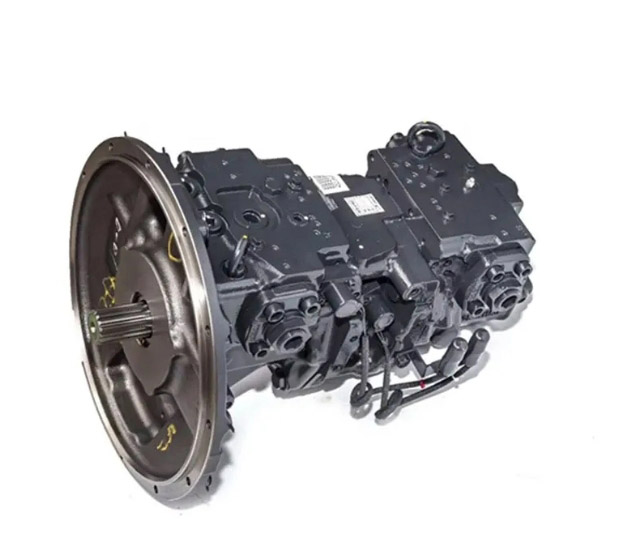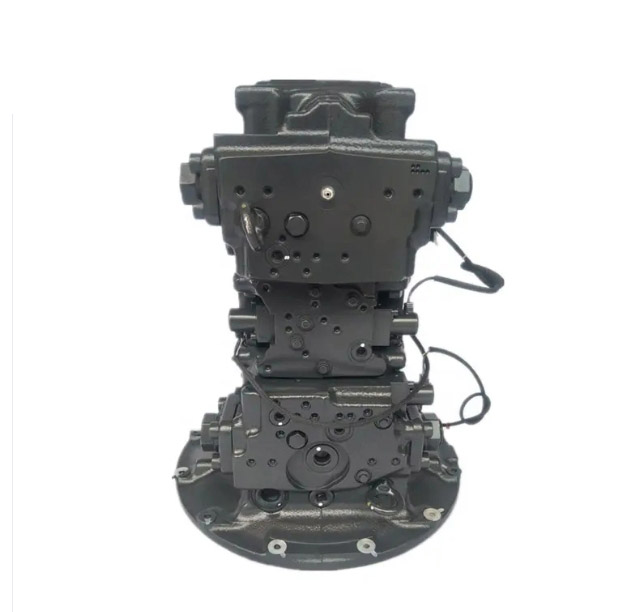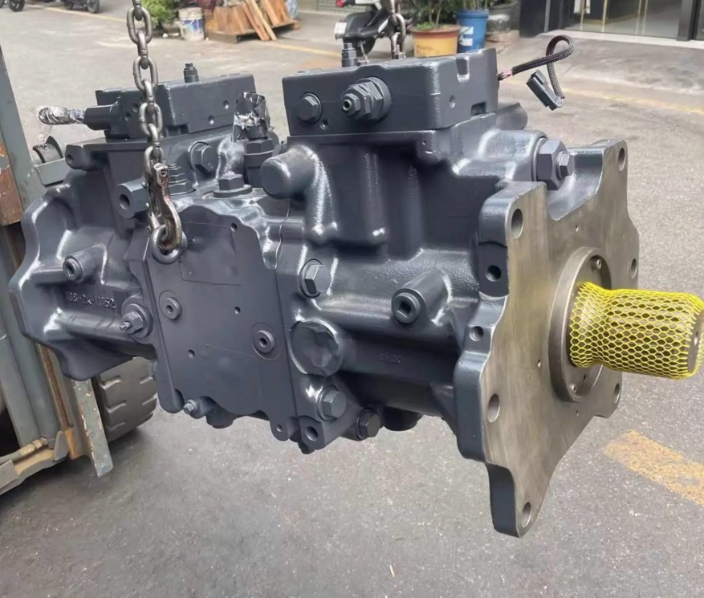
유압 main pumps serve as the lifeline of hydraulic systems in industrial equipment, powering essential functions and operations. To ensure the seamless operation and longevity of these pumps, thorough maintenance practices are indispensable. In this blog post, we will delve into a comprehensive guide on maintenance tips to help you maximize the efficiency and performance of hydraulic main pumps in industrial settings.
If the fluid level is below the required amount, carefully add the appropriate hydraulic fluid recommended by the manufacturer. It is crucial to use the correct type of hydraulic fluid to maintain the system’s performance and prevent damage. Exercise caution to avoid overfilling the reservoir, as this can result in excessive pressure within the system.
Inadequate hydraulic fluid levels can lead to cavitation, a condition where vapor bubbles form in the fluid due to low pressure, causing damage to pump components. Maintaining the optimal fluid level ensures proper lubrication of the pump and prevents excessive wear and reduced efficiency. Regularly checking and maintaining hydraulic fluid levels will contribute to the overall reliability and performance of the hydraulic system.
Fluctuations in system pressure can indicate various problems, such as worn-out components, air in the system, or fluid contamination. If you notice sudden spikes or drops in pressure, stop the system immediately and investigate the root cause. Inspect the hydraulic fluid for signs of contamination, such as debris or water, which can affect pressure levels.
Regularly monitoring system pressure allows for timely identification of issues that could lead to pump failures or system malfunctions. By using pressure gauges and being attentive to pressure readings, operators can proactively address any abnormalities and maintain the efficiency and reliability of the hydraulic system.
If you detect any leaks, it is important to address them promptly to prevent further damage to the system. Begin by determining the source of the leak, which could be due to damaged seals, loose fittings, or worn-out hoses. Clean the area around the leak to facilitate identification of the exact source.
After locating the leak, assess the severity and potential impact on system performance. Depending on the extent of the leak, you may need to replace seals, tighten fittings, or repair damaged hoses. Additionally, check the hydraulic fluid level to ensure an adequate supply and top up if necessary.
Regularly inspecting for leaks and addressing them promptly is essential for maintaining the integrity of the hydraulic system and preventing costly repairs or downtime. By staying vigilant and proactive in leak detection, operators can ensure the safety and efficiency of the hydraulic equipment.
Inspect the seals, gaskets, pistons, and bearings for any signs of wear, corrosion, or damage. Check for leaks around seals and gaskets, which can indicate deterioration and potential failure. Examine pistons for scoring or uneven wear, as these issues can affect pump efficiency and performance. Inspect bearings for signs of overheating, noise, or excessive play, which may require replacement.
Maintaining the correct hydraulic fluid level is essential to ensure proper lubrication of the main pump components and prevent issues such as cavitation, increased wear, and reduced efficiency. If the fluid level is below the required amount, add the appropriate hydraulic fluid recommended by the manufacturer to reach the optimal level. It is important to use the specified type of hydraulic fluid to avoid potential damage to the main pump and ensure smooth operation.
Regularly checking and maintaining hydraulic fluid levels for main pumps is critical for the overall performance and reliability of hydraulic systems. By adhering to a consistent inspection schedule, operators can mitigate the risk of pump failures and maximize the lifespan of the main pump.
Changes in system pressure readings can indicate potential issues such as worn-out components, air ingress, or fluid contamination within the main pump system. If abnormal pressure readings are detected, immediately stop the system to prevent further damage and investigate the root cause. Inspect the hydraulic fluid for any signs of contamination that could contribute to pressure irregularities.
Regularly monitoring system pressure for main pumps allows operators to proactively address any anomalies and maintain the efficiency and reliability of the hydraulic system. By utilizing pressure gauges and staying alert to pressure variations, operators can ensure the safe and optimal performance of the main pump.
If any leaks are identified, it is crucial to address them promptly to prevent further damage to the main pump and associated components. Start by locating the source of the leak, which could be attributed to damaged seals, loose fittings, or deteriorated hoses. Clean the area around the leak to facilitate a more accurate assessment of the leakage point.
After identifying the source of the leak affecting the main pump, evaluate the severity of the issue and its impact on system performance. Depending on the extent of the leak, necessary actions may include replacing seals, tightening fittings, or repairing hoses. Additionally, verify the hydraulic fluid level to ensure an adequate supply and top up if required.
Regularly inspecting for leaks impacting main pumps and promptly addressing any identified issues is essential for maintaining the integrity and efficiency of the hydraulic system. By actively monitoring and addressing leakages, operators can uphold the safety and functionality of the main pump within the 유압 시스템.
Inspect the seals, gaskets, pistons, and bearings of the main pump for any signs of wear, corrosion, or damage. Check for leakage around seals and gaskets, as this can indicate degradation and potential failure. Examine pistons for any scoring or uneven wear that may impact pump efficiency. Evaluate bearings for signs of overheating, noise, or excessive play, which may necessitate replacement.
If any worn-out or damaged components are identified during the inspection of main pump parts, it is imperative to promptly replace them to prevent unexpected failures and downtime. Adhere to the manufacturer’s instructions for replacing components and utilize authentic replacement parts to ensure compatibility and performance.
Regular examination of main pump components and proactive management of any identified issues are essential for maintaining the efficiency and reliability of the hydraulic system. By staying attentive to the condition of main pump parts and conducting routine inspections, operators can extend the lifespan of the hydraulic system and minimize the risk of costly repairs.
If you identify any worn-out or damaged pump components during inspection, it is crucial to replace them promptly to prevent unexpected failures and downtime. Follow the manufacturer’s guidelines for replacing parts and use genuine replacement components to ensure compatibility and performance.
Regularly examining pump components and addressing any issues proactively will help maintain the efficiency and reliability of the hydraulic pump. By staying attentive to the condition of pump parts and performing routine inspections, operators can prolong the lifespan of the hydraulic system and minimize the risk of costly repairs.

By implementing these detailed maintenance tips and adopting a proactive approach to hydraulic main pump care, industrial equipment operators can optimize pump efficiency, extend equipment lifespan, and reduce maintenance costs in the long run. Regular inspection, meticulous fluid maintenance, effective temperature control, seal and gasket upkeep, and professional servicing are integral components of a robust maintenance strategy for hydraulic main pumps in industrial environments. Prioritizing pump maintenance not only enhances operational efficiency but also fosters a safe working environment and boosts productivity in industrial operations. Remember, a well-maintained hydraulic main pump is the key to maximizing equipment performance and ensuring smooth operations in industrial settings.
